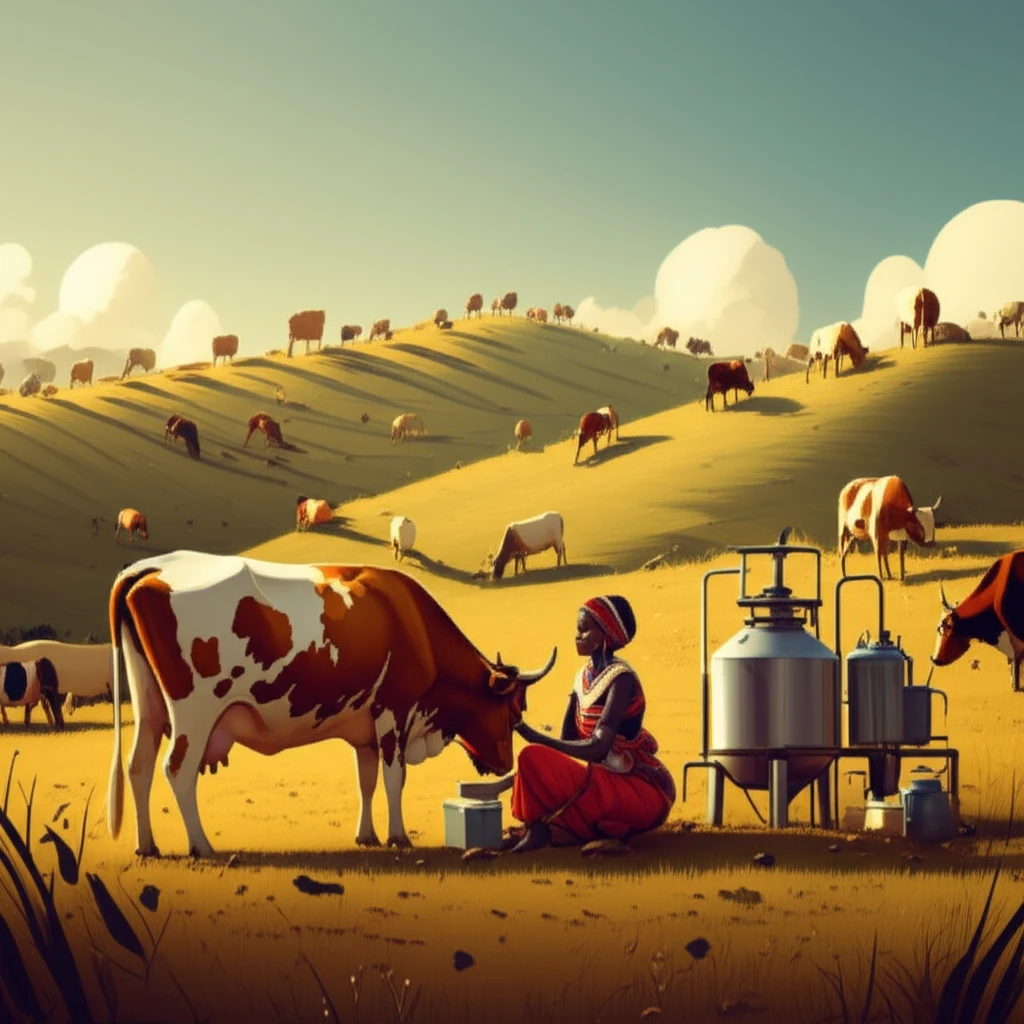
Beyond the Barn: Unlocking Dairy Potential in Ethiopia
"A closer look at sustainable milk production, processing, and handling in the Dawa Chefa District."
Ethiopia is experiencing significant growth in its demand for milk and dairy products, driven by increasing populations, urbanization, and rising incomes. Meeting this demand requires a substantial increase in local milk production. However, detailed information on current production, processing, and handling practices in many regions is lacking, hindering targeted improvements.
This article explores the findings of a study conducted in the Dawa Chefa District of Ethiopia, aiming to characterize the local dairy farming landscape. The research delves into production systems, processing techniques, and handling methods to identify opportunities for boosting sustainable milk production and improving the livelihoods of local farmers.
By understanding the nuances of milk production in this specific region, this article aims to provide valuable insights for researchers, policymakers, and investors interested in Ethiopia's dairy sector. The study reveals both the challenges and potential within this vital agricultural activity.
Decoding Dawa Chefa's Dairy Dynamics: What the Research Reveals?

The study, conducted across five 'Kebeles' (localities) within the Dawa Chefa district, provides a comprehensive overview of milk production. Researchers used questionnaires, interviews, and focus group discussions to gather data on various aspects of dairy farming. Here's a breakdown of the key findings:
- Local Cattle Dominance: Local cattle breeds are the primary source of milk, with an average of six cattle per household. Herd sizes range from 3 to 27.
- Mixed Crop-Livestock System: The dominant production system is mixed crop-livestock (98%), where dairy farming is integrated with crop cultivation. Peri-urban (1.5%) and urban (0.5%) systems exist to a lesser extent.
- Female-Led Activities: Milking, processing, and marketing of milk are primarily managed by women within the households.
- Feed Resources: The primary feed sources are communal grazing, crop residues, and crop aftermath. Natural pastures constitute 54% of available feed, with green maize stover contributing 10%.
- Reproductive Performance: The average age at first service for local cows is 29 months, decreasing to 27.03 months for crossbred cows. The calving interval is 25.86 months for local and 21 months for crossbred cows.
Turning Insights into Action: The Future of Dawa Chefa's Dairy Sector
The study underscores the need for targeted interventions to stimulate sustainable milk production in the Dawa Chefa district. Improving access to quality feed resources, promoting better animal management practices, and empowering women in dairy activities are crucial steps.
Furthermore, addressing the challenges associated with artificial insemination (AI), such as lack of access and ineffective semen, is vital for enhancing breeding programs and improving the genetic potential of local herds.
By focusing on these key areas, stakeholders can work together to unlock the full potential of the dairy sector in Dawa Chefa, contributing to improved livelihoods, food security, and economic growth in the region.
